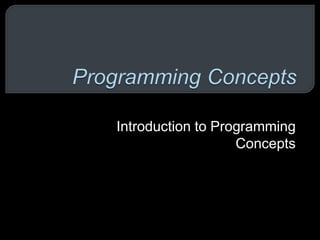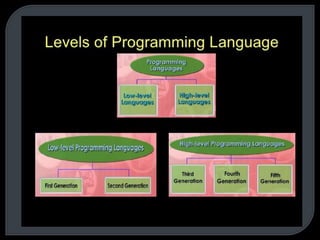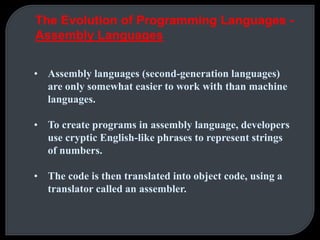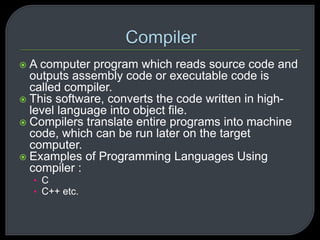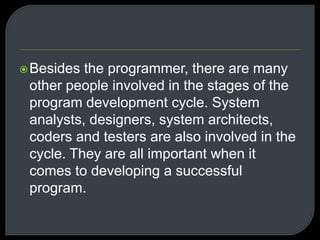This document discusses the evolution of programming languages from early machine languages to modern higher-level languages. It begins with an introduction to human and computer languages. It then covers the development of machine languages, assembly languages, and higher-level languages like FORTRAN and COBOL. The document discusses the advantages of each generation of languages and examples of languages from the 1950s to modern times.
